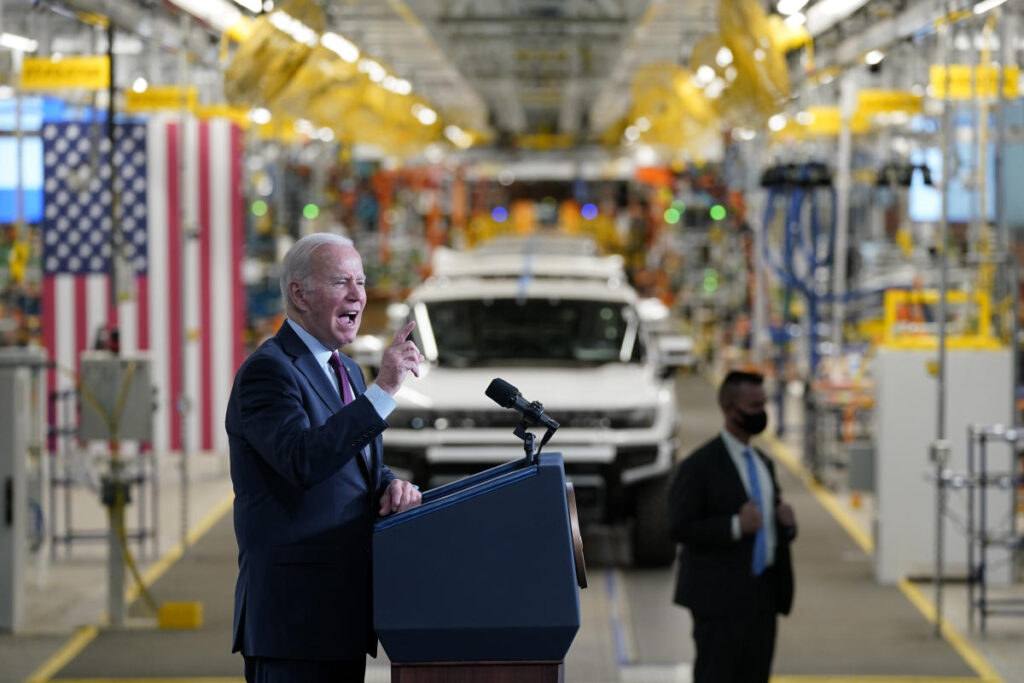As President Joe Biden’s term approaches its conclusion, misinformation surrounding the financial investments made by his administration in electric vehicle charging stations has surfaced on social media. These inaccuracies have been propagated by numerous high-profile individuals, including sitting legislators, who claim that a significant sum, specifically $7.5 billion, was expended to establish only eight charging stations. Such assertions, however, are a distortion of the facts as they mischaracterize the funding allocated by the 2021 Infrastructure and Jobs Act, often referred to as the Bipartisan Infrastructure Law. This legislation earmarks funds for an extensive national infrastructure aimed at creating a publicly accessible network of electric vehicle chargers, with the administration setting a target of installing 500,000 of these chargers by the year 2030.
The claims regarding the $7.5 billion are misleading because this figure represents the total amount allocated for the entire network of electric vehicle chargers, rather than reflecting what has already been spent. According to data from the Federal Highway Administration, there are presently 214 operational chargers across 12 states that have received funds from this law, and around 24,800 projects are currently underway nationwide. It is important to differentiate between a charging station—where several chargers can exist—and an individual charging port, which provides power to one vehicle at a time. In response to the false narratives, Secretary of Transportation Pete Buttigieg has taken to social media to clarify the situation, stating unequivocally that the $7.5 billion has neither been fully spent nor allocated solely for a handful of chargers.
The financial structure of the funding consists of two main components: $5 billion from the National Electric Vehicle Infrastructure Formula Program (NEVI) and $2.5 billion available through the Charging and Fueling Infrastructure Discretionary Grant Program (CFI). The NEVI distributes funds annually between 2022 and 2026 to transportation departments across all 50 states as well as Puerto Rico and Washington D.C., with funding accessible until 2030. Notably, 10% of the NEVI funds are reserved each year for states and local governments that require additional assistance. In contrast, the CFI program disperses funds via a competitive grant application process, prioritizing projects in underserved communities and promoting broader alternative fueling infrastructure beyond just electric vehicle charging.
Recent claims made by Congressman Michael Rulli of Ohio exemplify the misinformation being shared, as he inaccurately stated that the entirety of the $7.5 billion had been used to construct just eight charging stations. This post received substantial engagement, with tens of thousands of likes and shares. However, concrete evidence and reports illustrate that by early 2023, only four states—Ohio, New York, Pennsylvania, and Hawaii—had successfully opened charging stations funded by the Bipartisan Infrastructure Law, with just seven stations operational at that time. This discrepancy highlights the crucial distinction between media reports and social media discourse, where misinformation can proliferate unchecked.
To better understand the challenges with deploying this infrastructure, analysts have pointed out that the state’s experience with installing electric vehicle charging stations plays a pivotal role. States with a wealth of experience in such projects generally progress more quickly, while others that lack a robust existing framework, such as Wisconsin, may struggle with compliance and rollout issues. As observed by Loren McDonald, an independent analyst, while the program is federally initiated, its success hinges largely on how individual states manage their respective buildouts.
As of the latest updates, all 50 states, alongside Puerto Rico and D.C., have access to multiple funding rounds under the NEVI program, totaling nearly $2.4 billion. Furthermore, 37 states have been granted access to their third funding round, amounting to an additional $586 million. However, it is crucial to understand that this figure denotes funds that are allocated for projects yet to be spent rather than indicating money already utilized. The Federal Highway Administration has made notable allocations through both the CFI and NEVI programs, announcing more than $1.3 billion in grants, with a remainder of $779 million still available for forthcoming projects. In the broader context, there are more than 203,000 publicly accessible charging ports in the U.S., reflecting significant growth compared to prior years, driven by federal tax incentives and private investment alongside the initial funding efforts.
In summary, the misinformation surrounding the Biden administration’s funding for electric vehicle charging stations stems from misunderstandings regarding the nature and allocation of the budgeted amounts. The original $7.5 billion represents a comprehensive strategy aimed at establishing a robust national network of charging stations, not an expenditure on a limited number of facilities. The actual rollout is dependent on individual states, many of which are embracing the initiative while others are slower to adapt. As the project moves forward, the emphasis must remain on both the efficacy of state-level implementation and the increased public access to charging stations, ensuring that the infrastructure set forth in the Bipartisan Infrastructure Law becomes a lasting benefit to both electric vehicle users and the driving public overall.

